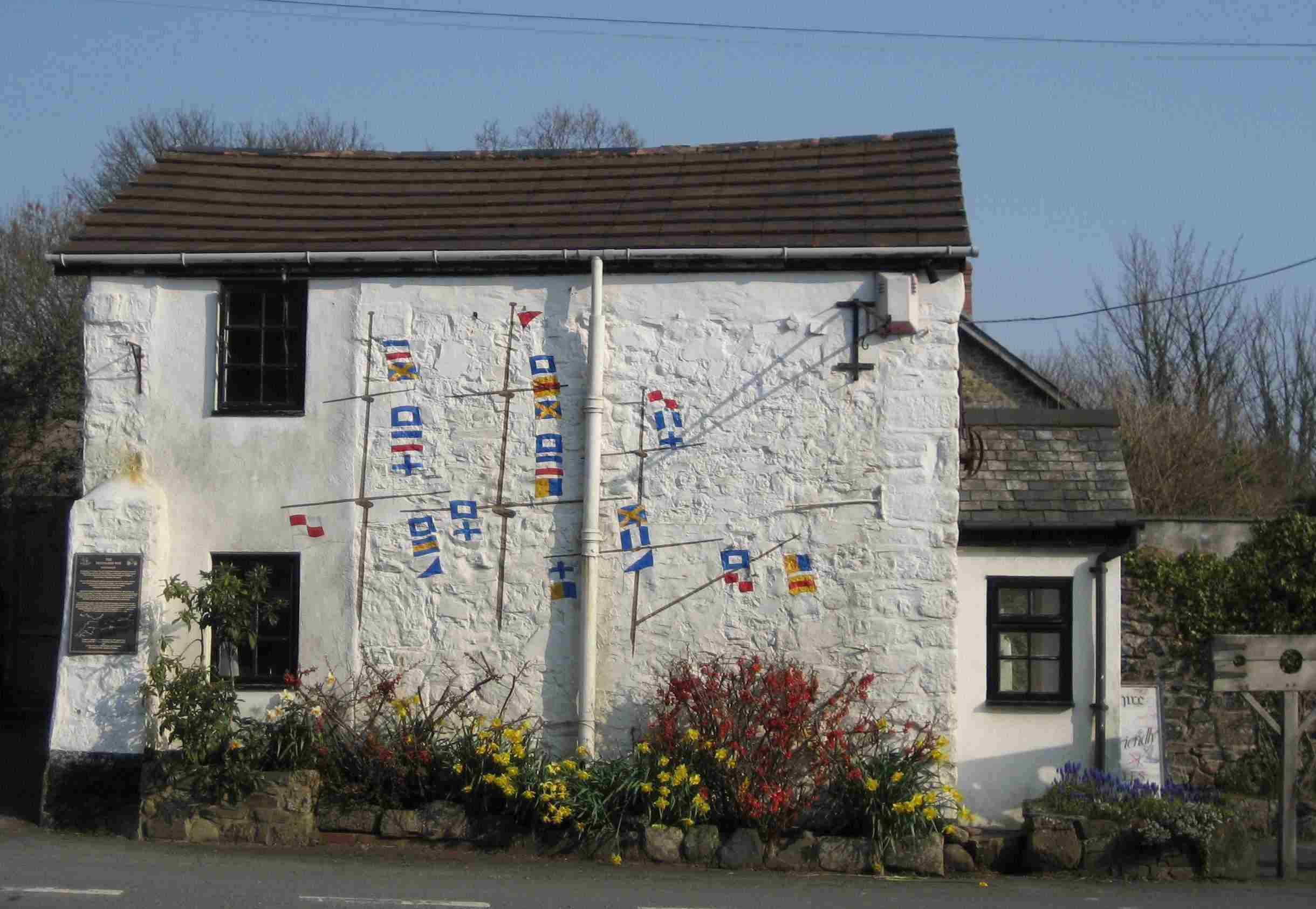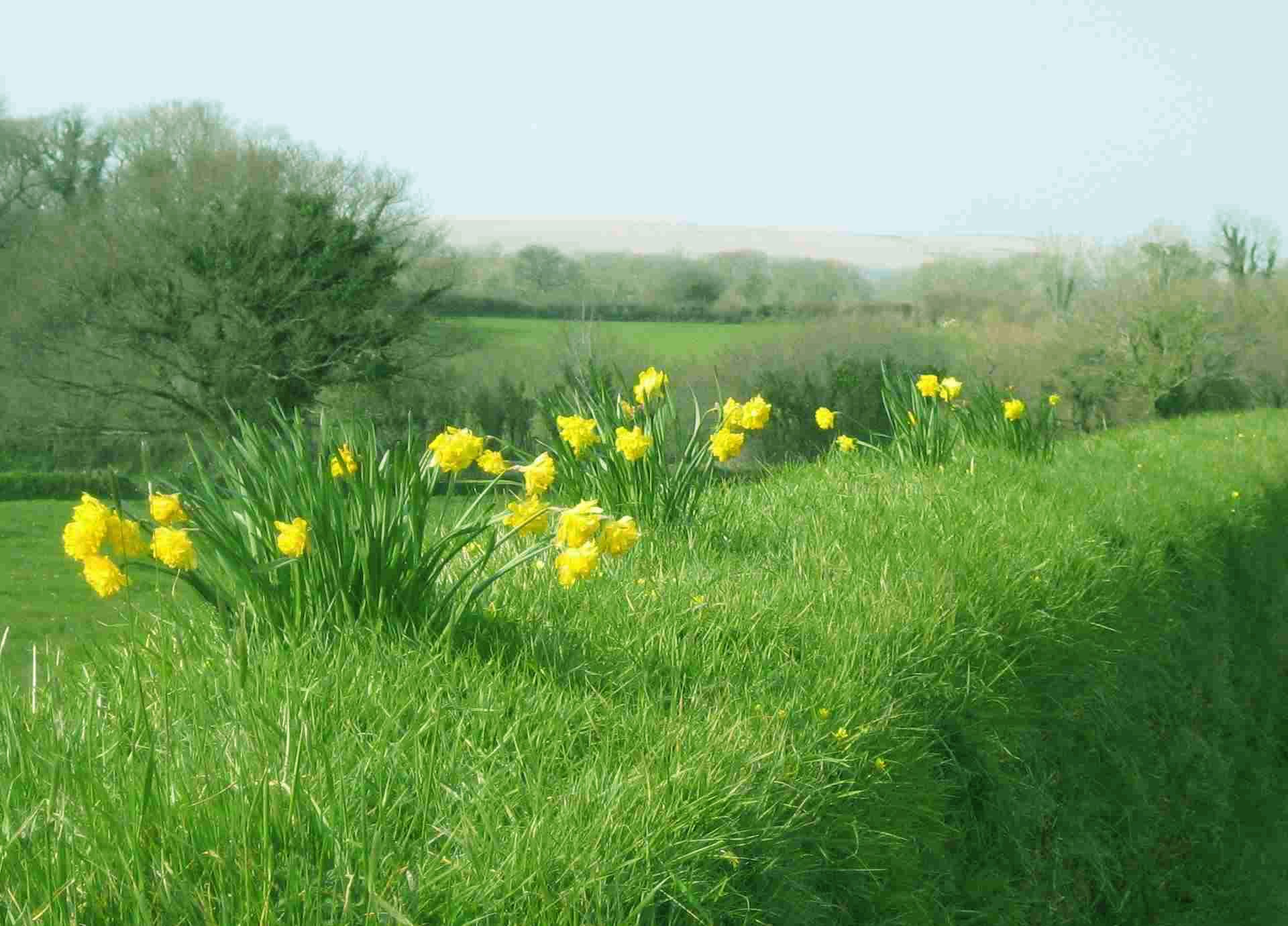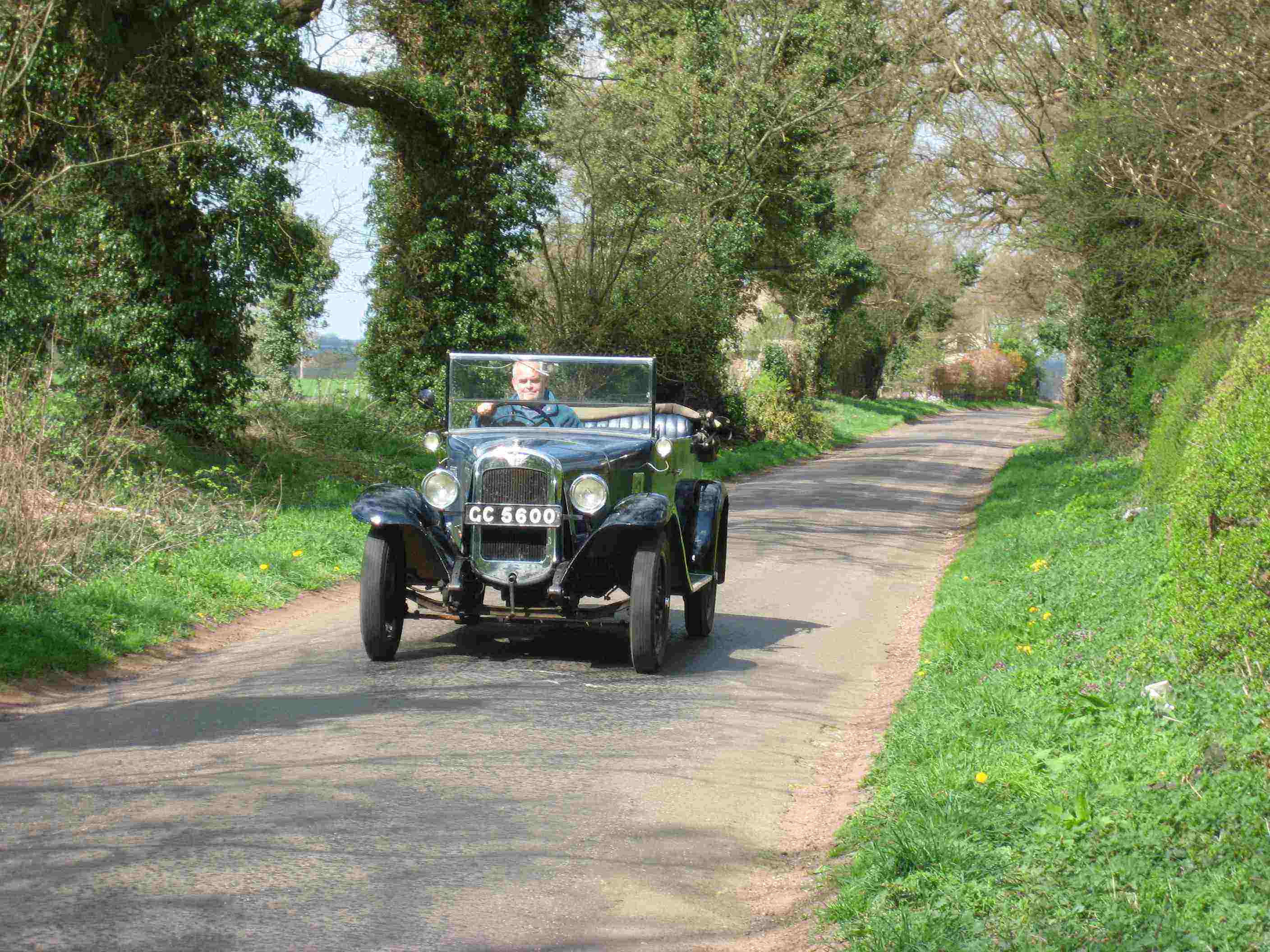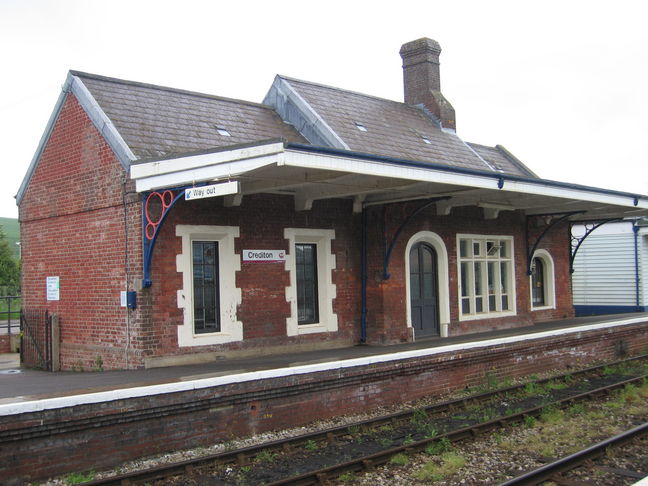| Mural at Sticklepath celebrating the Battle of Trafalgar. News of the victory was carried to London on this road | |
 |
|
 |
|
 |
|
| Days N1 - N14 English West Country | |
| Northbound Home Start hiking here English West Country English Midlands North of England Southern Scotland Central Scotland Scottish Highlands Southbound Home |
Wednesday,
March 28, 2007
Time of departure: 7.15 am Time of arrival: 5.15 am Place departed: Okehampton, Devon Place arrived: Crediton, Devon Miles: 18.7 Cum miles: 138.3 Percent complete: 14.9  Colt
Chase B&B, Crediton **** Colt
Chase B&B, Crediton ****Cost for bed and breakfast: £20 ($40) |
| Overview of both
hikes Excerpts Statistics What others say Acknowledgments Contact me Copyright Links |
|
 |
|
| Crediton railroad station dating back to 1850, photo courtesy of Owen Dunn | |
| The gas station convenience
stores offer pretty awful food, but the Jet
station on the way out of Okehampton sold a scrumptious Cornish
pastie. For those unfamiliar with such, it's a folded-over pie
crust encapsulating potato, steak and, sometimes, other
vegetables. It can't be very healthy, but it was hot and
tasty,
washed down with some of Jet's skim milk, which is the octane I prefer. My route today started on forest trails besides frost-sheened meadows, then transitioned to minor roads and country lanes which, in parts, have been adopted as the Two Moors Way. Cornish-style hedgerows bordered most of the lanes, and today were host to pheasants and bunnies. The thundery smack of pheasant wings, as my passage flushed them from the hedges, surprised me more than once. The sight of the vividly-colored beak and neck of the male on the wing gladdened the heart, and reminded me of the corny (unknown-origin) line that I love, "Some say de boyd is on de wing - but dat's absoyd, de wing is on de boyd". Soon I came to Sticklepath, where an unusual building with a bright mural lies on the main road opposite the Devonshire Arms. The mural depicts signal flags. It's to remind people that news about the Battle of Trafalgar had been first carried to London from Falmouth on this very road. Reporting that Nelson, though killed, had thoroughly defeated the combined navies of France and Spain must have been as dramatic as reporting the landing on the moon a century and a half later. Lieutenant John Richards Lapenotiere (the name is probably as English as the Norman invasion of 1066) took 37 hours for the 271-mile ride using a post chaise or horse-drawn carriage, which also carried mail. In importance, his journey would rank alongside the rides of Paul Revere and Dick King. Today the route has been named the Trafalgar Way. I had now walked only half the distance that Lapenotiere covered, and in something like twice as many hours spread over nine days. Growing weary in Yeoford, three miles west of Crediton and a worthy 15 miles from today's Okehampton start, I approached the only evident B&B, which proclaimed its 16th-century heritage. Something told me that the price would be proportional to its years, and so it turned out. Even so, I might have bedded down there except that I also sensed that I was to consider myself privileged to stay there. “You look knackered,” said the landlady, and then told me the price, which I sensed might also have been adjusted to reflect my fatigue and hiker’s attire. So I declined politely, my thoughts on the price still formulating to surface on another day of this journal. Then I walked, or rather trudged, the last three miles. I was glad I’d done the extra distance when I found the very hospitable Colt Chase B&B, whose landlady, Valerie Brewer, instantly recognized me as a long-distance hiker, and switched on the hot water for a bath. After a relaxing bath, and ready for sleep, I nevertheless decided to make the effort to head out for a meal. I had had thoughts of a nice hot curry in my head all day. Given that my wife resists cooking or eating curry, I wanted to seize my British visit as an opportunity to make up for lost time. Indeed, I savor a good curry, and a hot one, and am somewhat a connoisseur of these things. Britain is still full of Indian restaurants, as it used to be, though they are often now take-out places and have other ethnic competition. I sat down to a hot Madras lamb curry and rice, with an onion salad, chapathi – and lime pickle. What a fine pickle it was! On talking to the chef, I learned it was Bedekar’s lime pickle, direct from Guarpure Path in Mumbai. It was his favorite also, and he listed its advantages:
Now no one should idly breeze by a name like asafoetida. When I got home, Wikipedia described it thus: “This
spice is used as a digestive aid, in food as a condiment and in
pickles. Its odor is so strong that it must be stored in airtight
containers; otherwise the aroma, which is nauseating in quantities,
will contaminate other spices stored nearby. However, its smell becomes
much milder in cooking and presents an onion-like taste. Some claim
that the use of asafoetida in a marinade or coating for fried fish
eliminates the strong smell usually left behind after frying. In India,
it is used especially by the merchant caste of the Hindus and by
adherents of Jainism, who do not eat onions and garlic. It is mainly
grown in Iran, Afghanistan and Kashmir. Asafoetida has certain
medicinal uses and most commonly is used as a digestive aid. It is
reputed to lessen flatulence and is often added to lentil or eggplant
dishes in small quantities. It is also said to be helpful in cases of
asthma and bronchitis. A folk tradition remedy for children's
colds: it is mixed into a foul-smelling paste and hung in a bag around
the afflicted child's neck. In Thailand it is used to aid babies'
digestion and is smeared on the child's stomach in an alcohol tincture
known as "mahahing." John C Duval reported in 1936 that the odor of
asafoetida is attractive to the wolf, a matter of common knowledge, he
says, along the Texas/Mexican border. Asafoetida has also
been
reported to have contraceptive/abortifacient activity, and is related
(and considered an inferior substitute to) the ancient ferula species
silphium. It is also used as one of several possible scent
baits,
most notably for catfish and pike. In homeopathic medicine,
asafoetida is used for reverse peristalsis, the sensation of a bubble
or a lump in the stomach rising up to the throat. In Jamaica
asafoetida is traditionally applied to a baby's anterior fontanelle
(Jamaican patois "mole") in order to prevent spirits (Jamaican patois
"duppies") from entering the baby through the fontanelle.”
I definitely recommend this condiment, for who could make light of these carefully enumerated merits? It's apparently available at discerning Asian supermarkets, where you will earn respect when you ask for Bedekar lime pickle by name. Do not accept competing products by Natco or Patak (Patak lacks the aforementioned asafoetida, and Natco lacks crowd-dispersing after effects). Before serving it to Anglo-Saxons, see your insurance company. Today I struggled to maintain an upbeat mood. I had been nine days on the trail. My new life was replete with multiple blisters, wonky knees, and aching shoulders. Though the curry was tasty and filling, for some reason I was now experiencing Chernobyl-sized, nuclear-strength indigestion. Also, perhaps connected with my breakfast-less beginning at Okehampton, my pack felt heavy all day. I reviewed how I might lighten it further this evening. This is a recurring review that usually results in keeping it as it is. All alone on the trail, my old life was losing its relevance. Did I really like what I had embarked on?I |
|
| Day N8 © 2007 and 2008 Daryl May Day N10 | |